-
Title (Dublin Core)
-
How Axis land mines work
-
Article Title and/or Image Caption (Dublin Core)
-
Title: How Axis land mines work
-
Subtitle: Sown by millions to slow our advancing troops, they must be removed by experts who know all of the fiendish tricks
-
extracted text (Extract Text)
-
THE dragon's teeth of this war are land
mines sometimes rated the most devilish
defensive weapons man ever devised. The
Axis has used them by the millions—in
Africa, on the beaches of Sicily and Italy, in
the Pacific island areas. Every land avenue
to Hitler's Inner Fortress is virtually paved
with them. It is estimated that in some the-
aters, such as Italy, as much as 40 percent
of Allied casualties are caused by mines.
Essentially, the land mine is an explosive
charge which is set off automatically when
a man or vehicle touches it or approaches it.
Cheap to make, light to transport, and easy
to install, it is as hard to find as a sniper, as
dangerous to disarm as a commando. To
cope with it, the Army Engineers have
developed a corps of specialists who have
one of the most dangerous, nerve-racking
assignments in the book. It is their job to
clear the way for every land advance of our
troops, and they know as much about land
mines as the men who make and install
them—which is plenty.
There are two principal types of land
mines: antitank, designed to destroy vehi-
cles, and antipersonnel, designed to kill men.
Antitank mines are hidden in the ground
and are set off by the weight of a passing
tank or truck. Antipersonnel mines may
be hidden in the ground, among trees, in
buildings, or in any kind of booby-trap
setup. They may be set off by pressure or by
trip wires, and some varieties leap from the
ground and explode at waist height.
All land mines have two basic parts, the
explosive charge and one or ‘more firing
devices or detonators. Antitank mines do
their damage by explosive force alone; anti-
personnel mines hurl projectiles, like mortar
shells or shrapnel. In both categories, those
developed by the Germans are the most
fiendish and complex.
The German Tellermine, an antitank
charge, is typical. It looks like an over-
grown discus, 16 inches in diameter and four
inches thick, and contains 11 pounds of TNT,
which is set off by pressure on the top of
the mine. Its blast can blow a jeep to bits,
tear off a tank tread, or rip open a tank's
belly and kill or maim everyone inside.
There are two types of Tellers. No. 1, the
older, is exploded by pressure anywhere on
its top plate; a tank can nudge it and escape
with minor damage. No. 2 has a smaller
pressure plate which insures a knockout for
any vehicle which sets it off. No. 2 also has
a fluted top which holds drifting sand and
makes it easier to camouflage.
‘The Teller’s pressure detonator, a screw-
in device with a firing arm held under
tension by a shear pin, can be removed with
relative ease by a mine expert. But this
mine has two auxiliary detonators, on the
side and in the bottom, equipped with trip
wires usually set to entangle anyone who
disturbs it. And, as a final touch of deviltry,
Tellermines are sometimes “pancaked” in a
hole with a maze of trip wires tying them
together.
Compared with the Tellermine, the Italian
road mine, which the Germans sometimes
use, is as simple as a mousetrap. Basically,
it is a metal box four feet long and eight
inches square, with a loose cover set on
springs. In a compartment at each end is
a four-pound charge of TNT. Between these
charges is a percussion cap and a spring-
driven striker arm held under tension by a
cord. On the loose lid is a knife blade which
cuts the tension cord when the lid is pressed
down. There are no auxiliary detonators.
The Japs use a road mine which looks like
a small edition of Tellermine No. 1 and con-
tains two pounds of picric acid set off by
a pressure detonator. These Jap mines are
also pancaked to make a particularly
dangerous trap for man or vehicle.
The pressure detonators on these Axis
antitank mines, except the Italian, are of
two fundamental types: shear-pin and ball-
bearing. Tn the shear-pin type, a firing armi
is held under tension above a percussion cap
by a pin of soft metal, which breaks when
additional pressure is applied. In the ball-
bearing type, the striker arm is held up by
ball bearings which, under pressure, are
forced into recesses and release the firing
pin. Both types of detonator have a safety
device, usually a hole through the firing arm
where a pin can be inserted to prevent its
release. With this pin in place, the detonator
usually can be unscrewed and removed
“safely.” (The word is the Engineers’; to
the layman it may seem something of an
overstatement.) Even with the pressure
detonator out, there may be auxiliary firing
devices of the unpredictable kind used in
antipersonnel mines.
Of all the antipersonnel mines in the Axis
armory, the German S mine is the trickiest.
This is the jumping mine, the one which
hops out of the ground and explodes at belly
height. It is really a bomb, a pound of TNT
surrounded by half-inch steel balls in a
thin metal case. This bomb fits into an
open can which acts like a small mortar;
when the firing device is actuated, a light
powder charge under the bomb element
boosts it into the air, where a delayed-action
fuse explodes it like a shrapnel burst.
‘The S mine takes either a sensitive pres-
sure detonator with three wire prongs or a
tension detonator fitted with a trip wire.
Both types work on either the shear-pin or
the ball-bearing principle, and either can be
used as an auxiliary in the Tellermine.
S mines are nearly always scattered through
flelds of Tellermines, to make the “delous-
ing” job doubly hazardous. If there is a
more terrible type of mine, our men have
not yet faced it. The § mine will kill men
100 yards away; yet there is a safety area,
a circle about six yards wide centering on
the mine itself. A man who knows he has
tripped one off has a fair chance to escape
by taking one or two steps away from it
and falling flat. And some experts say that
if a man feels the pressure prongs under
his foot he can force the mine to explode
in the ground by standing on it. That's
something like smashing the head of a
rattlesnake by leaping on it with bare feet.
But men have done it and lived.
The Italians developed a picket mine,
really a bomb, for field use. It is simply a
cylinder of TNT wound with brittle wire,
fitted with a trip-cord firing device, and
fastened to a stake. When set off, it hurls
wire fragments in all directions and inflicts
horrible wounds,
These weapons are used in any number
of combinations, particularly in defensive
tactics. The Germans, for instance, have
planted as many as 5,000 Tellermines in a
coastal area a quarter of a mile wide and
less than half a mile long, and along with
then 1,000 leaping
S mines. Besides their horrible man-killing |
characteristics, they have a high strategic
value in slowing up an enemy attack. The
specialists whose job it is to clear them out |
have resorted to many stratagems—driving |
a herd of hogs or a flock of sheep through
a mined area, bombing it from the air, blast-
ing it with artillery fire, or working it over
with bangalore torpedoes, which set off the |
mines by sympathetic detonation. All these
means work with some degree of effective-
ness; but eventually the mine fields have
to be cleaned out by hand—locating the
remaining mines with magnetic detectors,
digging them up, removing their firing
devices. The process is just as minute in
villages deserted by the enemy, where sap-
pers must carefully search for booby traps.
Every move of the Allies into Axis terri-
tory raises new problems for our mine ex-
perts, and since land mines are essentially
defensive weapons, the Nazis are particular-
ly ingenious in their use. But we have
learned most of their tricks. Better yet,
we have in our own secret arsenals mines
which can top the best of those the Axis
has thus far revealed. There is no doubt
that as invasion progresses the Allied forces
will be using penetration tactics to do a
job of offensive mining. Then the Axis will
find that the terrors packed in their Tellers
and S mines were just a small sample of
what can actually be stowed away in a
bundle of TNT.
-
Contributor (Dublin Core)
-
Hal Borland (article wirter)
-
William W. Morris (photographer)
-
Language (Dublin Core)
-
eng
-
Date Issued (Dublin Core)
-
1944-04
-
pages (Bibliographic Ontology)
-
128-131, 200
-
Rights (Dublin Core)
-
Public Domain (Google digitized)
-
Archived by (Dublin Core)
-
Lorenzo Chinellato
-
Marco Bortolami (editor)
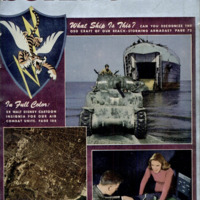 Popular Science Monthly, v. 144, n. 4, 1944
Popular Science Monthly, v. 144, n. 4, 1944
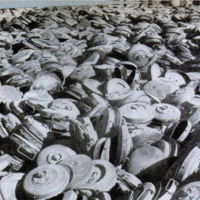 Immagine 2022-04-30 141819.png
Immagine 2022-04-30 141819.png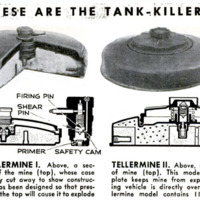 Immagine 2022-04-30 141847.png
Immagine 2022-04-30 141847.png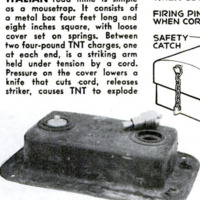 Immagine 2022-04-30 141904.png
Immagine 2022-04-30 141904.png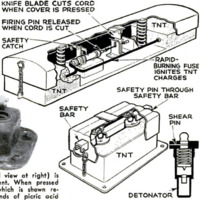 Immagine 2022-04-30 141920.png
Immagine 2022-04-30 141920.png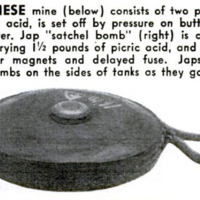 Immagine 2022-04-30 142008.png
Immagine 2022-04-30 142008.png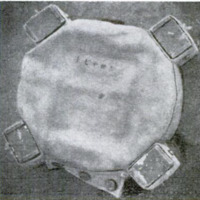 Immagine 2022-04-30 142026.png
Immagine 2022-04-30 142026.png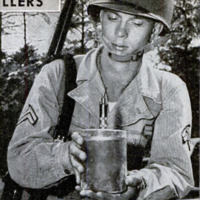 Immagine 2022-04-30 142045.png
Immagine 2022-04-30 142045.png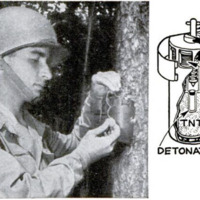 Immagine 2022-04-30 142100.png
Immagine 2022-04-30 142100.png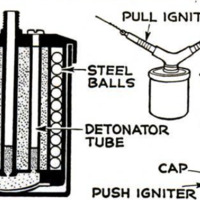 Immagine 2022-04-30 142119.png
Immagine 2022-04-30 142119.png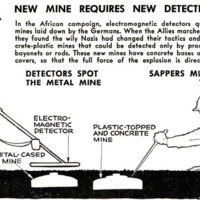 Immagine 2022-04-30 142136.png
Immagine 2022-04-30 142136.png









